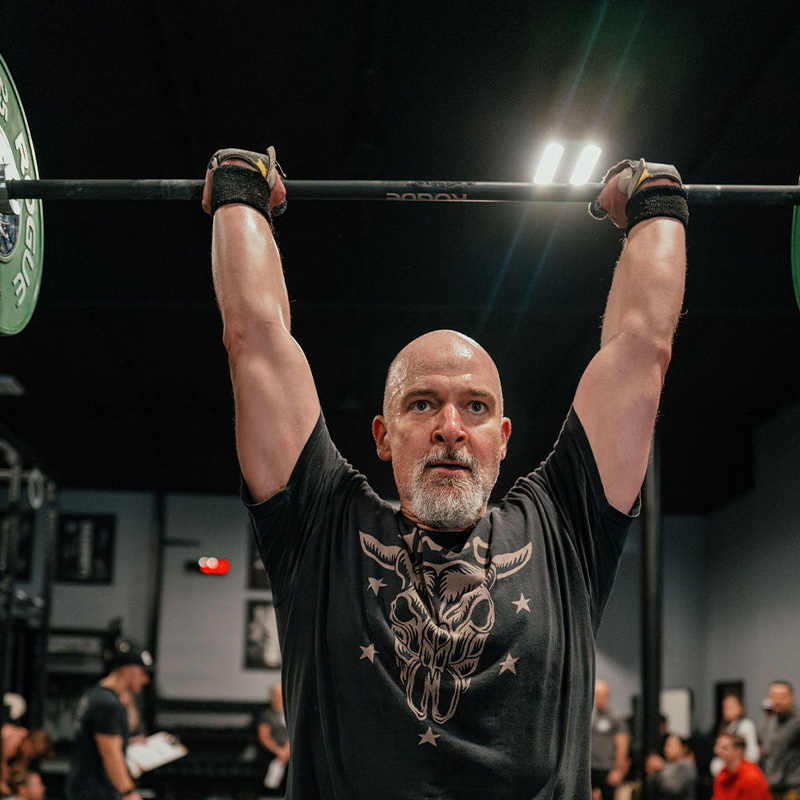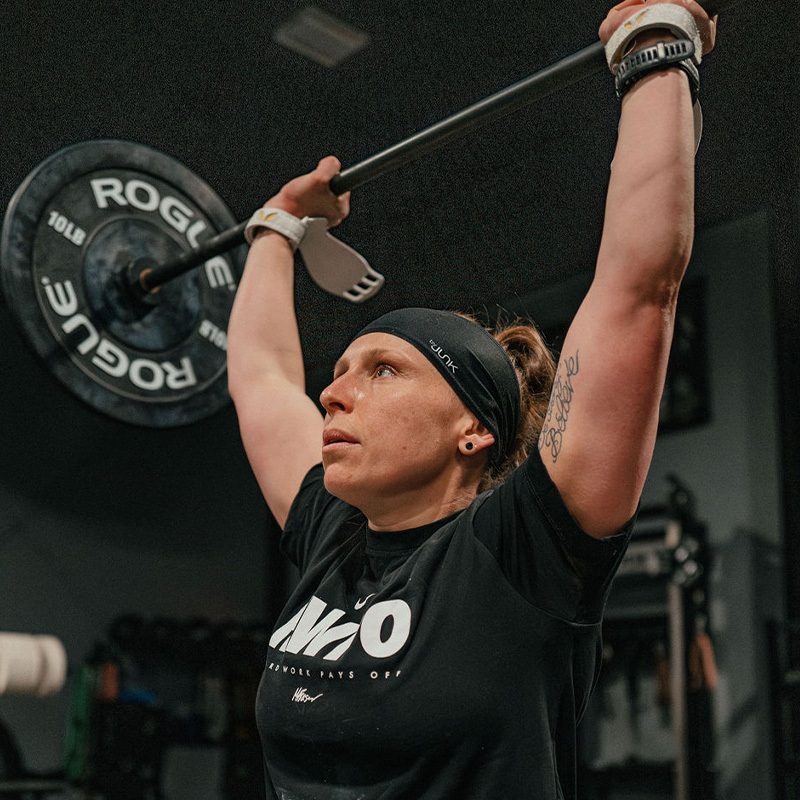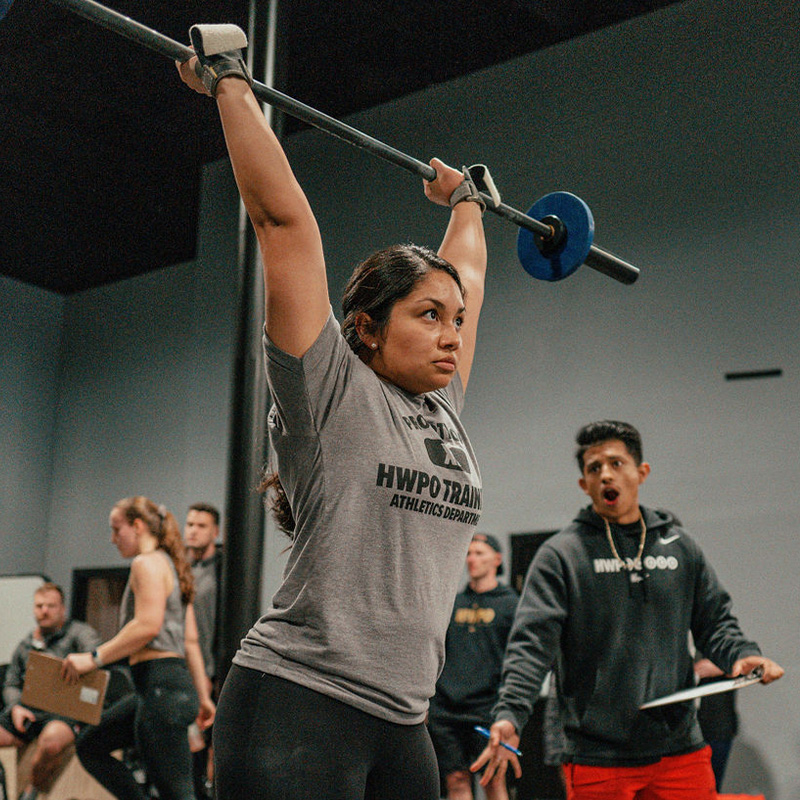Your First Olympic Weightlifting Meet: What to Expect
Your first Olympic Weightlifting competition is a mix of excitement, focus, and adrenaline. It’s not just about lifting heavy — it’s about testing your training in a new environment and learning how the sport comes to life on the platform. Whether chasing your first total or curious about what to expect, this guide will help you feel ready for the day.
Nov 19, 2025
Are you thinking about signing up for your first Olympic Weightlifting competition?? FIRST—congratulations! Competing is a big step and an amazing way to celebrate all the HARD WORK you’ve put into training. If you’re feeling a mix of excitement and nerves, that’s completely normal. This guide will walk you through exactly what to expect on meet day, the rules you’ll need to know, and how to prepare so you can step on the platform with confidence.
What is an Olympic weightlifting competition?
An Olympic Weightlifting meet is an organized event where athletes perform the two official lifts:
- The Snatch – lifting the barbell from the ground to overhead in one smooth motion.
- The Clean & Jerk – lifting the barbell to the shoulders (the clean), then overhead (the jerk).
You’ll get three attempts at each lift. The heaviest successful snatch and clean & jerk are added together for your total. Awards are usually given based on bodyweight category and age group, and gold, silver, and bronze medals are awarded for the snatch, clean & jerk, and total lifted.
Your first meet should not only be about chasing PR’s—it’s about testing yourself, learning the competition process, gaining experience and confidence in the competition setting, and being part of the weightlifting community.
What to expect on meet day
Your first competition day can feel intense — a new environment, lots of noise, and a fast-paced schedule. But once you know what to expect, it all feels much more manageable. Here’s a quick breakdown of how the day usually unfolds and what happens at each stage.
Weigh-in
You’ll check in two hours before your session starts.
Officials will record your bodyweight and ask for your opening attempts. This is the first snatch and clean & jerk weights you plan to lift. You can always change these later once the competition starts!
Weigh-in Rules
- You must weigh in during the 2-hour window before your session
- You must weigh in in your singlet
- Your body weight determines your competition category
- As long as you’re within your chosen category, you’re good to lift!
Warm Up Room
- Before lifting on the competition platform, you’ll warm up with your coach (or a training partner, or whoever is there to help you).
- Everyone is lifting at different times, so coaches keep track of the order and make sure you’re ready, and your warmups are perfectly timed for what is being loaded on the bar.
The Competition Platform
Stepping onto the competition platform is when everything comes together — all your training, practice, and preparation. It can feel nerve-wracking at first, but once you understand how the flow works, it becomes much easier to focus on lifting. Here’s how it all works once you’re under the lights.
Order of Lifting
- The barbell only goes up in weight throughout the session
- The lifter attempting the lowest weight goes first
- If two lifters call for the same weight, the one who declared it earlier goes first
Your Turn
- When it’s your turn, your name will be called, and you’ll have one minute to start your lift
- Step out, focus, and do just what you’ve practiced in training
- Three referees will judge your attempt
White light = good lift.
Red light = no lift.
You need two out of three white lights for the attempt to count, to be a “GOOD LIFT”
If you make a lift,
- The referees will show at least two white lights → your attempt is counted as a “good lift"
- That weight becomes your new best lift for that movement (snatch or clean & jerk)
- You (or your coach) will then declare the weight for your next attempt
- The next attempt must be at least 1 kg heavier
- You usually have 30 seconds after your good lift is confirmed to make this declaration
- Example: You open your snatch at 70 kg and make it. Your coach can declare 71 kg (or more) for your next attempt
If you miss a lift
- The referees will show two or more red lights → your attempt does not count
- Your “best lift” for that movement stays at whatever your last successful attempt was (or zero if you haven’t made one yet)
- You can still increase the weight for your next attempt, or repeat the same weight (with at least a 1 kg change if you want to go up)
- Missing one attempt doesn’t eliminate you—you just move on to your next attempt. You have 3 attempts
Example: You attempt 70 kg on your second snatch and miss it. You can try 70kg again on your third attempt, or bump to 71+ kg if you feel confident.
“Bombing out”
- If you miss all three attempts in either the snatch or the clean & jerk, that lift is recorded as a zero
- If you bomb out in the snatch, you can still continue to clean & jerk, but you won’t have a total at the end (so you won’t place in the rankings)
- The above scenario is why coaches usually encourage opening with a safe, conservative weight—to make sure you’re on the board early
Key takeaways for first-time lifters
Make your opener! Choose a weight you can hit confidently under pressure. This gets you on the board and settles your nerves. A lot of lifters experience a massive sense of relief after their first attempt and can focus more on the competition and less on nerves!
Missing one lift is not the end of the world—you still get more chances.
Your best successful snatch + best successful clean & jerk = your competition total.

Community support
One of the best surprises for first-timers: the cheering. No matter how much weight is on the bar, the crowd wants to see you succeed. Everyone in the crowd cheers for every lifter—you will notice that once the lifter approaches the bar, everyone gets SILENT! This is to give the lifter the courtesy they need to focus.
Basic rules you should know
Before competition day, it helps to understand the key rules that keep every lift fair and consistent. These guidelines cover how many attempts you’ll get, how timing works, and what the referees are looking for. Knowing them ahead of time takes away a lot of uncertainty, so you can focus on lifting with confidence and avoid any easy mistakes that could cost you a “good lift.”
Lifts
- Three Attempts Per Lift: You’ll do three snatches and three clean & jerks.
- Time Limit: You must begin your attempt within 1 minute of your name being called.
The Time Clock
- Once your name is called, you have 1 minute to start your lift.
- If you are following yourself (e.g., your next attempt comes up right after your last one), you get 2 minutes.
- The clock starts as soon as the bar is loaded and your name is announced.
Good Lift vs. No Lift
To get white lights, the bar must be controlled overhead, with arms straight, feet in line, and no dropping the bar before the down signal.
Common reasons for a “no lift”:
- Pressing out the arms (not locking smoothly)
- Dropping the bar before the down signal
- Not standing up fully with feet in line
- Elbows or knees touching the ground
- Touching the barbell with your foot
The down signal
- Once you’ve stood up with the bar steady overhead, the referees will give a down signal (usually an arm motion or buzzer/light)
- You must wait for this before dropping the bar. Dropping early = no lift
Equipment rules
- Singlet: Required for competition so referees can clearly see your body positions.
- Shoes: Weightlifting shoes are strongly recommended for safety and technique.
- Allowed gear: Belts, wrist wraps, knee sleeves, and tape are fine (within size limits).
- Not allowed: Straps, gloves, or anything that helps you hold onto the bar.
How to prepare for your first meet
Your first weightlifting meet is about experience — learning how competition works, testing your training under pressure, and enjoying the day. Preparation goes a long way toward making it smooth and stress-free. From choosing the right openers to packing the essentials and managing nerves, here’s how to set yourself up for a confident and successful first competition.
Choose Conservative Openers
Pick weights you could confidently hit on any training day. The goal is to build confidence, not max out on your first attempt.
Pack the Essentials
- Singlet and shoes
- Belt, knee sleeves, wrist wraps (if you use them)
- Snacks and water
- A warm-up plan written down
- Photo ID for weigh-in
Practice how you want to compete
- In training, rehearse waiting for the “down” signal and lifting on a clock. This makes the competition feel less intimidating.
- Practice your warmups—from barbell to your last warmup, and your opener. This way, you are prepared for what you will be doing from the time you start warming up to the time you take your opening attempt.
Fuel and rest
- Eat familiar foods, hydrate well, and get plenty of sleep leading up to meet day. Keep snacks simple and easy to digest.
- Don’t decide to eat or drink anything on meet day that you wouldn't normally eat on a typical training day before training.
Manage nerves
Everyone feels nervous their first time competing. Focus on one lift at a time and try to stay present in your warmups—Remind yourself: you’re here to learn and enjoy the experience. Every competition is a chance to learn and gain confidence.
Final words from Coach Aimee
Your first Olympic Weightlifting meet will be unforgettable. You’ll learn how the competition works, experience the excitement of lifting on a platform, and join a community that celebrates every attempt. Remember, the goal of your first meet isn’t just to set records—it’s to gain experience and have fun.
When you go to your first competition, try not to have expectations other than HAVE FUN, and MAKE YOURSELF PROUD.
Have respect for the referees, loaders, coaches, and fellow athletes. Cheer other athletes on, as Weightlifting meets are known for their supportive atmosphere. If you need help, never hesitate to ask—there are always coaches and athletes at meets willing to help!
I always say, trust your training, and step onto that platform with pride and confidence. You earned this, and you only get one first meet—make it a positive one.
Preparing for your first Olympic Weightlifting Meet? Start HWPO LIFTs 5-week meet prep to be ready!


Take your training to the next level
If you’re preparing for your first meet or want to take your Olympic lifts to the next level, HWPO LIFT is built for you. It focuses on mastering technique, developing strength, and building the consistency you need to perform under pressure.









